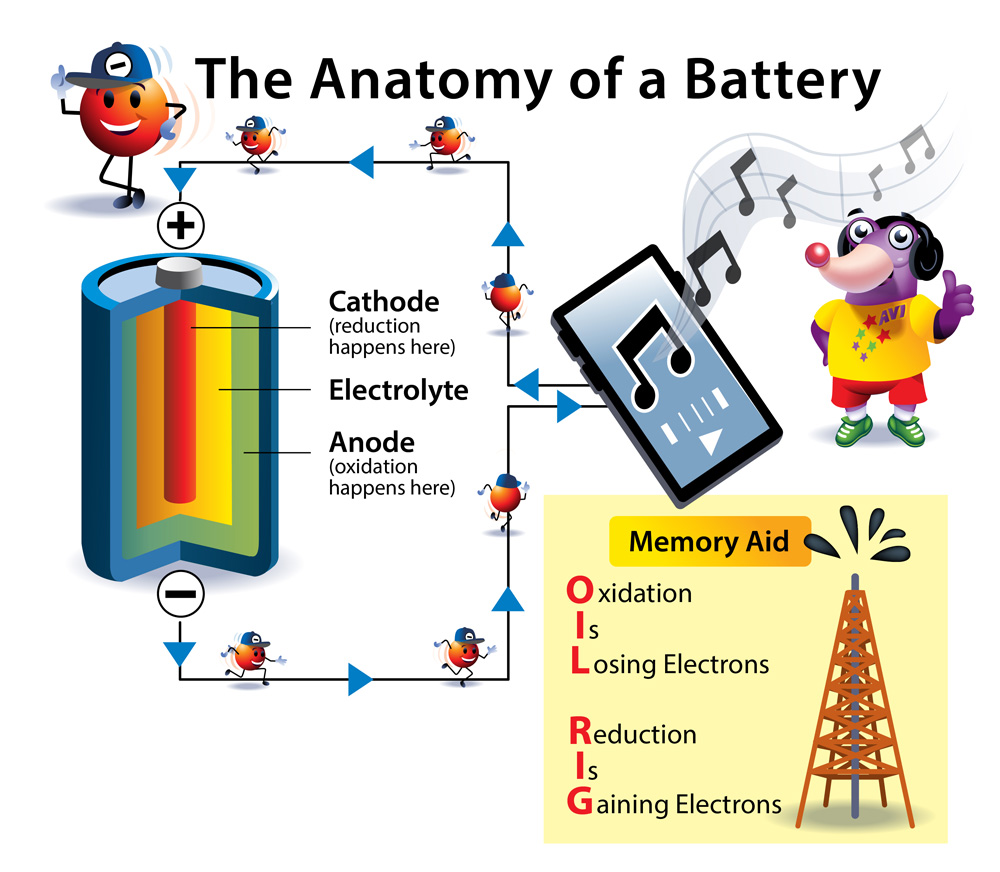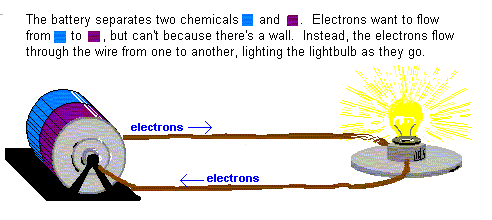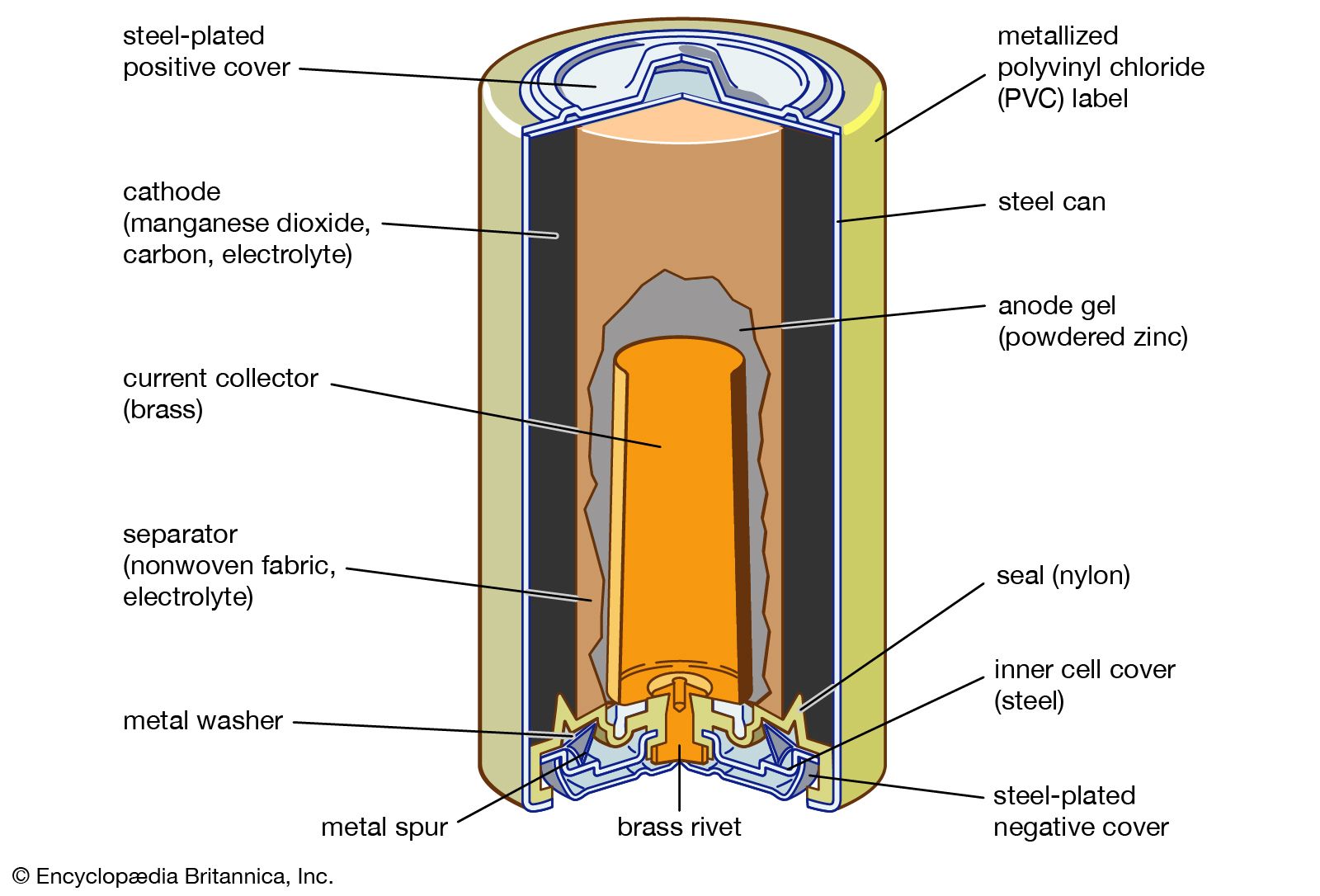A battery is a device that stores and provides electrical energy. It powers everything from small gadgets to large vehicles.
Batteries have become essential in our daily lives. They power devices like phones, laptops, and even cars. Understanding batteries helps us make better choices about the gadgets we use. Batteries come in different types, each with unique features. Some are rechargeable, while others are single-use.
Their ability to store energy makes them crucial in technology and everyday life. As technology advances, batteries continue to evolve. They are becoming more efficient and environmentally friendly. Learning about batteries can help us appreciate the technology behind our devices. It also helps in making informed decisions when buying electronic products. Let’s explore what makes batteries so important.

Credit: www.batterypowertips.com
Introduction To Batteries
Batteries power our modern world. They are everywhere, from smartphones to cars. Understanding batteries helps us appreciate their role in daily life.
This section explores what batteries are and their fascinating history. Let’s dive into the basic definition and historical background of batteries.
Basic Definition
A battery is a device that stores energy. It converts chemical energy into electrical energy. Inside, chemical reactions create a flow of electrons. This flow generates electricity. Batteries have positive and negative terminals. Connecting these terminals completes a circuit. This allows electricity to power devices.
Batteries come in various shapes and sizes. Each type serves different purposes. Some are rechargeable, while others are disposable. Understanding these basics is key to using batteries effectively.
Historical Background
The history of batteries dates back to ancient times. The first known battery was the Baghdad Battery. It was discovered in Iraq and believed to be 2,000 years old. Scientists think it was used for electroplating. In 1800, Alessandro Volta invented the voltaic pile. This was the first true battery. It used zinc and copper discs separated by saltwater-soaked paper.
Volta’s invention led to more discoveries. In 1866, Georges Leclanché created a practical battery for everyday use. Later, Thomas Edison and others improved battery technology. These advancements paved the way for modern batteries. Today, batteries are essential for portable electronics and electric vehicles.
Types Of Batteries
Batteries are essential in our everyday lives, powering everything from remote controls to electric vehicles. With the variety of batteries available, understanding their types can help you choose the right one for your needs. Have you ever wondered why some batteries last longer than others, or why some are rechargeable? Let’s dive into the world of battery types.
Primary Vs. Secondary
Primary batteries are single-use, meaning once they are depleted, they cannot be recharged. These are great for devices that need a steady, reliable power source but don’t drain quickly, like smoke detectors or wall clocks. On the other hand, secondary batteries are rechargeable. They can be used multiple times, making them perfect for high-drain devices like smartphones and laptops.
Think about the last time your remote control died unexpectedly. It might have had a primary battery. Switching to a secondary battery could save you money and reduce waste. Isn’t it time to rethink your battery choices?
Lithium-ion And Alkaline
Lithium-ion batteries are among the most popular rechargeable batteries today. They are lightweight, have high energy density, and can hold a charge for a long time. This makes them ideal for portable electronics such as laptops and cameras. Alkaline batteries, however, are typically primary batteries. They are affordable, widely available, and best used in low-drain devices like flashlights.
Have you ever noticed how your smartphone battery performs better than the old AA batteries in your flashlight? That’s the power of lithium-ion technology. But remember, using the right type of battery in the right device maximizes performance and efficiency.
As you navigate through the options, consider what devices you use most and how they consume power. Are you ready to make smarter battery choices?
How Batteries Work
A battery is a device that stores energy and provides power through chemical reactions. It consists of two electrodes and an electrolyte, creating an electric current to power devices. This process allows for portable energy, powering everything from flashlights to smartphones.
Understanding how batteries work can be fascinating, especially if you’ve ever wondered what keeps your gadgets buzzing with life. Have you ever thought about the small miracles happening inside that little power pack? It’s more than just a box that stores energy—it’s a complex system that involves chemistry, storage, and release. Let’s dive into the nuts and bolts of battery operation.Chemical Reactions
At the heart of a battery are chemical reactions. These reactions occur between two different substances: the anode and the cathode. Each time you use your device, electrons flow from the anode to the cathode through a circuit, powering your gadget. The magic happens inside the battery as chemicals react to create electrical energy. This process transforms chemical energy into electrical energy, giving your devices the juice they need. Isn’t it intriguing how such tiny reactions can have such a big impact on your daily life?Energy Storage And Release
Have you ever wondered how batteries keep your devices running even when unplugged? It’s all about energy storage and release. The battery stores energy in chemical form when charged and releases it as electrical energy when needed. Think of your battery like a savings account. You deposit energy when you charge it. When you use your device, you withdraw this energy, allowing it to function. But what happens when you run low? That’s your cue to recharge and replenish the energy bank. Why does your battery sometimes run out faster than expected? Many factors can affect this, like temperature or usage patterns. Understanding this can help you manage your devices better. So next time you’re frustrated with a dying battery, consider what it has already given you today and recharge it with care. Whether you’re using a smartphone, a laptop, or even a remote control, batteries are central to your tech experience. Next time you pick up a device, take a moment to appreciate the science behind its power. You might find yourself marveling at the everyday miracle that keeps you connected to the world.Components Of A Battery
A battery stores and supplies power through chemical reactions. It has three main parts: an anode, a cathode, and electrolyte. The anode and cathode are electrodes where reactions happen, while the electrolyte allows the flow of electric charge.
Understanding the components of a battery can feel like uncovering a mystery. Why do these devices power our gadgets and cars? Each component plays a crucial role in making a battery function efficiently. Knowing these parts can help you appreciate the power source of your everyday devices.Anode And Cathode
The anode and cathode are like the heartbeat of a battery. The anode is the negative side, often made of materials like lithium or zinc. The cathode, on the other hand, is the positive side and is typically composed of compounds like lithium cobalt oxide or manganese dioxide. Together, they create a flow of electrons. This flow is the very electricity that powers your devices. Imagine them as a team working seamlessly to keep your gadgets alive.Electrolyte And Separator
The electrolyte is a chemical medium that allows the flow of electric charge between the anode and cathode. It can be a liquid, gel, or solid and is crucial for the transfer of ions. Think of it as the highway that enables the movement of ions, facilitating the battery’s operation. The separator, meanwhile, is like a diligent security guard. It ensures the anode and cathode don’t touch each other. If they did, it would lead to a short circuit, rendering the battery useless. The separator is usually made from a porous material that allows ions to pass through while keeping the electrodes apart. Have you ever wondered why batteries don’t simply fall apart? The careful design of these components keeps them stable and functional. Next time you hold a battery, think about the complex yet fascinating team effort that powers your world.Applications Of Batteries
A battery is a device that stores and provides electrical energy. Powering smartphones, cars, and medical devices are common uses. Batteries are essential in renewable energy systems, supporting solar panels and wind turbines.
Batteries are the invisible force powering much of our modern world. From the minute you wake up and check your phone, to the moment you switch off the lights at night, batteries play a crucial role. Their applications are vast, stretching across countless industries and personal daily routines. Understanding these applications can help you appreciate the technology that keeps your life running smoothly.Everyday Devices
Batteries are at the heart of numerous gadgets you use daily. Think about your smartphone, laptop, or tablet. Each of these devices relies on batteries to keep you connected, entertained, and informed. Consider your morning ritual. As you brew coffee, your electric toothbrush is already at work. Even your remote control, which you might absentmindedly use to turn on the morning news, depends on batteries. Wearable tech, such as fitness trackers, also relies heavily on battery power. These devices help you monitor your health and fitness in real-time. The convenience they provide is unparalleled, all thanks to the humble battery.Industrial Use
Beyond the household, batteries are vital in the industrial sector. They power heavy machinery and equipment that are essential for construction and manufacturing. Forklifts and other transport equipment often run on rechargeable batteries, boosting efficiency and reducing emissions. In the world of renewable energy, batteries store power generated by solar panels and wind turbines. This stored energy can be used when the sun isn’t shining or the wind isn’t blowing. This ensures a stable energy supply, crucial for both small businesses and large-scale industries. Emergency power systems, such as those in hospitals, rely on batteries to keep critical systems running during power outages. This can be life-saving, proving just how indispensable batteries are in industrial contexts. Have you ever thought about what life would be without these powerful little devices? The next time you charge your phone or see an electric car silently glide by, remember the battery. It’s more than a tool; it’s a catalyst for innovation and convenience in our everyday lives.
Credit: www.acs.org
Advancements In Battery Technology
Advancements in battery technology are reshaping the way we power our everyday devices. From smartphones to electric vehicles, batteries are crucial. As technology evolves, so does the demand for efficient and powerful batteries. Let’s dive into the exciting developments in battery design and explore what’s on the horizon.
Innovations In Design
Battery design has come a long way from bulky, inefficient models. Today, manufacturers focus on creating slimmer, lighter batteries without sacrificing power. Think about the last time you bought a new gadget. Wasn’t it amazing how long it lasted compared to your older devices? This is due to innovations like lithium-ion technology and solid-state batteries.
These new designs allow for faster charging and longer life cycles. They’ve also opened doors for flexible batteries, which could revolutionize wearable tech. Imagine a smartwatch that bends with your wrist or clothes that can power your phone. The possibilities are expanding rapidly.
Future Trends
Looking ahead, the future of battery technology promises even more exciting changes. You might wonder, what will power our devices in the next decade? Researchers are exploring sustainable materials and renewable energy sources to create eco-friendly batteries. This is crucial as we face climate challenges.
Additionally, there’s a buzz around wireless charging and energy harvesting. Picture a world where your devices charge themselves as you walk. These trends could transform how you interact with technology. Are you ready for a future where plugging in is a thing of the past?
Advancements in battery technology are not just about making things last longer. They are about changing how we live and interact with the world. As we move forward, how will you embrace these changes in your daily life?
Environmental Impact
Batteries power our lives, from smartphones to electric cars. But have you ever stopped to think about their environmental impact? The production and disposal of batteries pose significant environmental challenges. Understanding these impacts can help you make informed choices about the batteries you use and how you dispose of them.
Recycling Challenges
Recycling batteries isn’t as straightforward as recycling paper or plastic. Batteries contain harmful chemicals like lead, cadmium, and lithium, which require specialized facilities to manage safely. Unfortunately, only a small percentage of batteries are recycled globally.
Many people don’t know where or how to recycle batteries properly. This lack of awareness leads to millions of batteries ending up in landfills each year. In landfills, these toxic materials can leach into the soil and water, causing severe environmental harm.
Have you ever thrown away a battery, unsure of what else to do with it? You’re not alone, but this common action has significant consequences. Understanding the proper recycling channels can help reduce the environmental footprint of battery disposal.
Eco-friendly Alternatives
As awareness grows, so do eco-friendly alternatives to traditional batteries. Rechargeable batteries are one such option. They reduce waste and can be reused hundreds of times, saving both money and the environment.
Innovations in battery technology are also paving the way for greener options. For example, companies are developing batteries using less harmful materials, such as sodium-ion or solid-state batteries. These alternatives promise to be less toxic and more sustainable.
It’s crucial to stay informed about these developments. By choosing more sustainable battery options, you can play a part in reducing environmental harm. What choices can you make today to lessen your impact on the planet?

Credit: www.qrg.northwestern.edu
Choosing The Right Battery
A battery is a device that stores energy for future use. It powers many everyday items, from phones to cars. Choosing the right battery ensures efficiency and longevity for your devices.
Choosing the right battery can seem daunting, but it’s a decision that impacts everything from the lifespan of your gadgets to your wallet. We’ve all been there—staring at endless rows of batteries in a store, wondering which one is the best choice. The good news is that with a bit of guidance, you can make a smart choice that aligns with your needs and budget. Let’s dive into some key aspects to consider when selecting the right battery for your devices.Factors To Consider
When selecting a battery, several factors come into play. Capacity is crucial; it determines how long your device will run before needing a recharge. Size and compatibility are also vital. You need a battery that fits perfectly in your device without causing damage. Consider the type of battery too. Lithium-ion batteries are popular for their efficiency and lightweight nature, but they might not be the best for every situation. Safety is another priority. Check if the battery complies with safety standards, ensuring it won’t overheat or leak. Think about the environmental impact. Some batteries are more eco-friendly than others. You can make a difference by choosing rechargeable options or those made from sustainable materials.Cost Vs. Performance
Choosing a battery often boils down to cost versus performance. You might be tempted to go for the cheapest option, but ask yourself: will it deliver the performance you need? Sometimes spending a bit more can save you money in the long run. Consider a battery’s longevity. If a battery lasts longer, it might be worth the extra cost upfront. Think of it as an investment in reliability. Performance can also mean how well a battery performs under different conditions. For example, some batteries work better in extreme temperatures. Think about your usage patterns. If you use your device frequently, investing in a high-performance battery could be a wise choice. But if it’s for occasional use, a less expensive option might suffice. Are you ready to make an informed choice? Next time you’re faced with a wall of batteries, remember these tips and choose wisely. Your devices—and your wallet—will thank you.Frequently Asked Questions
What Is A Battery Short Answer?
A battery is a device that stores and converts chemical energy into electrical energy. It powers electronic devices by supplying electricity. Batteries come in various types, including alkaline, lithium-ion, and nickel-cadmium. They are essential for portable gadgets like smartphones, laptops, and remote controls.
What Is The Definition Of A Battery?
A battery is a device that stores and converts chemical energy into electrical energy. It consists of one or more electrochemical cells. Batteries power various electronic devices by providing a steady flow of electricity. They are essential for portable electronics, vehicles, and backup power systems.
What Is In A Battery?
A battery contains an anode, cathode, separator, electrolyte, and current collectors. Anodes release electrons, while cathodes receive them. Electrolytes allow ion flow between electrodes. Separators prevent short circuits by keeping electrodes apart. Current collectors connect the battery to an external circuit, enabling power delivery.
What Is A Battery In A Circuit?
A battery in a circuit provides electrical energy, powering devices by creating a voltage difference. It consists of cells that store chemical energy, converting it into electrical energy. Batteries come in various types and sizes, suitable for different applications, ensuring efficient circuit operation.
Conclusion
Understanding batteries helps us in daily life. These power sources are vital. They store energy for various devices. Phones, cars, and many gadgets rely on them. Knowing battery types aids smart choices. Each type has unique features. Rechargeable batteries save costs.
Non-rechargeable ones are often disposable. Proper care extends battery life. Avoid extreme temperatures. Keep devices off when not needed. Recycling old batteries prevents pollution. This simple action protects the planet. Educated choices lead to better use. Batteries impact technology significantly.
Their role in advancing tech is undeniable. Embrace knowledge for a sustainable future.
